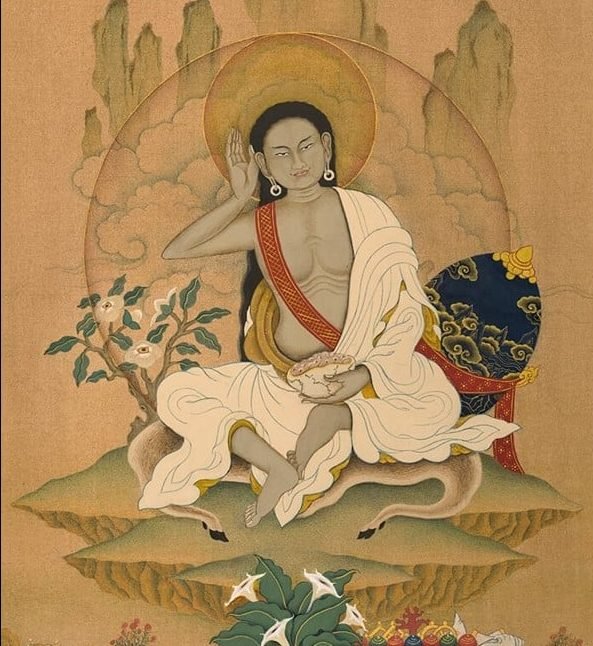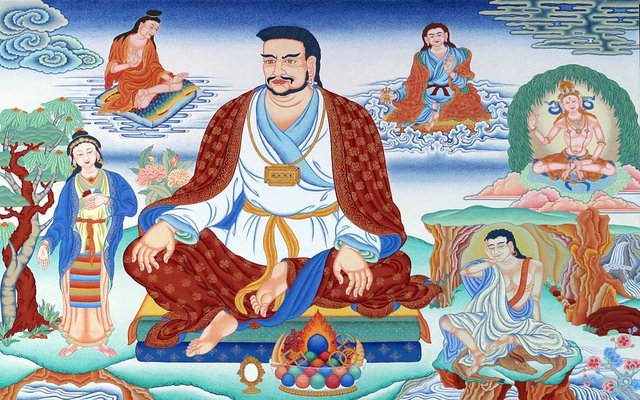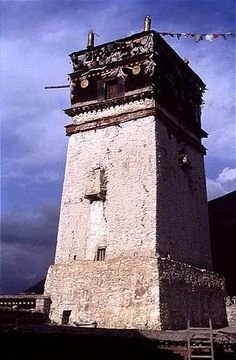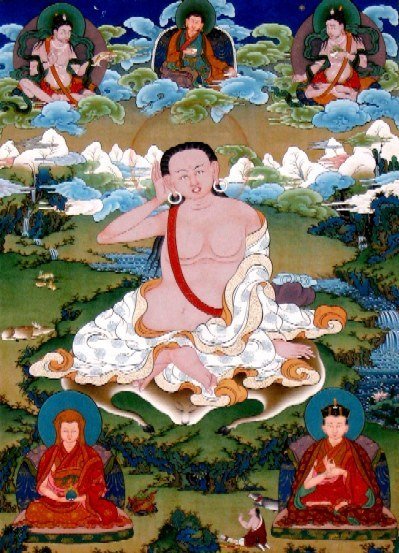མི་ལ་རས་པ།: Tibet's Great Yogi
Milarepa was born in the Water Dragon year of 1052. He was born into a noble Tibetan family in the village of Kya Ngatsa in the Gungthang province of Western Tibet. His birth name was Mila Thöpaga, meaning “A joy to hear”.
When Mila was a young boy, his father passed away from an untreatable illness. Having lots of accumulated wealth and land, Mila’s Uncle took over the role of looking after Mila’s mother, Mila and his sister. Under the guise of compassion for his bereaved family members, Mila’s Aunt and Uncle eventually took over all of the land and riches belonging to Mila’s father and left Mila’s family destitute.
Once Mila grew old enough, his mother gave him all the money she had saved over the years and sent him out into the wild frontiers of Tibet with the desperate wish that he seek a teacher of sorcery. Mila was to learn the black arts and return with magical abilities to exact revenge on his aunt and uncle for the abuse and torture his family received at their hands.
Mila fulfilled his mother’s request and was able to find a teacher of black magic. Mila mastered the techniques taught to him and eventually returned home to complete his quest.
Sitting atop a neighboring hill, Mila used his sorcery to topple a building that was hosting a wedding party for the son of his aunt and uncle, killing 35 people in the process. Somehow, the villagers came to know it was black magic from Mila that had caused this disaster and they quickly set out in anger to find him. Luckily, his mother was able to send word to him before they were able to find him and Mila cast one last spell, raining fierce hail upon the village, destroying their crops completely. He hastily made his escape by running at supernatural speeds in great leaps, a technique he learned from his sorcery teacher.
For a time afterward, Mila became a wandering fugitive without aim or purpose, except to avoid the consequences of his grave actions. Whilst wandering Mila began to lament his bad deeds and began searching for a Buddhist teacher who might be able to help him make amends for the bad karma he had certainly accumulated.
It was in this search that he heard rumors of the great master Marpa Lotsawa (Marpa the translator). A feeling of devotion spontaneously arose in Mila at the sound of Marpa’s name and he set out to find this great master to seek the teachings he had wished for.
Though Marpa’s wife took to Mila quite easily, Marpa proved to be a more difficult person to deal with than Mila expected. Marpa was known for his temper and it seemed that the beginning of Mila’s relationship with Marpa triggered his temper quite often.
Marpa gave Mila a place to stay and food to eat but would not teach him any Dharma. Instead he would seemingly abuse and taunt Mila, even though Marpa’s wife would plead for him not to.
Marpa eventually set Mila to the task of building a tower. This task was to be done by Mila alone and must be done to the exact specifications and dimensions required by Marpa. Mila toiled day and night breaking his back to complete this task in the hopes of pleasing his master and finally receiving the teachings he so desired.
Upon completion of the first structure, Marpa made some excuse as to why this didn’t suit his needs anymore and asked Mila to tear down the building and build another with different specifications. Mila did as he was told and put himself to the task of tearing the structure down and began building the new structure.
Marpa’s wife took pity on Mila and sent some laborers to help Mila complete the second building. Mila accepted their help surreptitiously and, upon completion, sought his master to show the completed work. Marpa, through his clairvoyance, pointed out each stone that was placed by Mila’s helpers and scolded Mila once again, asking him to dismantle the building and to place back to the earth each stone in the exact place from which it came.
Mila was nearly suicidal at this point but Marpa was aware of his tipping point and made nice with Mila, only to request once again that he please build one more tower for him. This time Milarepa did not accept any help and put his body and mind to the task of completing this structure on his own, this time with complete awareness as to each stone’s placement and origin, hoping that he will succeed in pleasing Marpa and finally be able to receive the teachings that will alleviate the karmic results of his previous murderous actions.
At the completion of this third tower, Marpa was pleased with Milarepa and eventually conceded to take him on as a student. Having the fortitude built up in him from these incredible tests Marpa had put Mila through, Mila was able to learn and advance quickly.
After some time, Mila left his teacher and practiced in solitude in the wilderness for twelve years. He lived off of nothing but stinging nettles while he practiced diligently in a cave. The nettle diet gave his skin a greenish hue and as his yogic abilities advanced, rumors were abound about this great green yogi, causing even some Hindus to seek him out believing him to be one of their gods due to his unusual skin tone.
Mila was able to brave the cold of the Himalayas due to his mastery of Tumo, which created a yogic heat from within. To this day, you can see monks practicing this amazing feat, sitting in snow in competition with each other to see who can melt the largest ring around them. Mila’s mastery of this technique was so powerful that he only adorned himself in a simple white cotton cloth. The term “repa” comes from this, meaning “cotton clad one”. Thus, he was called Milarepa. Repas exist to this day and can still be seen in remote parts of Tibet practicing Tumo in the bitter cold of the glacial Himalayas.
Eventually, Milarepa achieved complete enlightenment and became renowned throughout Tibet as a great Yogi. He had a lovely singing voice and would spontaneously sing songs of enlightenment (Dohas) that can be found in the "Hundred Thousand Songs of Milarepa". His life as a Buddhist master is filled with wonderful lessons and stories of enlightened teachings and provide a wealth of instruction to students of the Buddha Dharma for both the novice and the master.
His life is an example of how even the worst of us can be redeemed both inwardly and outwardly and that, given the chance, we all can change our ways and mend the mistakes made in our past.
Milarepa later shared a small glimpse of his lamentation for his past deeds with another great student of Marpa Lotsawa, Rechungpa. "In my youth I committed black deeds. In maturity I practised innocence. Now, released from both good and evil, I have destroyed the root of karmic action and shall have no reason for action in the future. To say more than this would only cause weeping and laughter. What good would it do to tell you? I am an old man. Leave me in peace."




To listen to the audio version of this article click on the play image.

Brought to you by @tts. If you find it useful please consider upvoting this reply.
bravo for this article @mayushi ! great work you're sharing here :) would look forward for your further posts ! have a nice weekend !